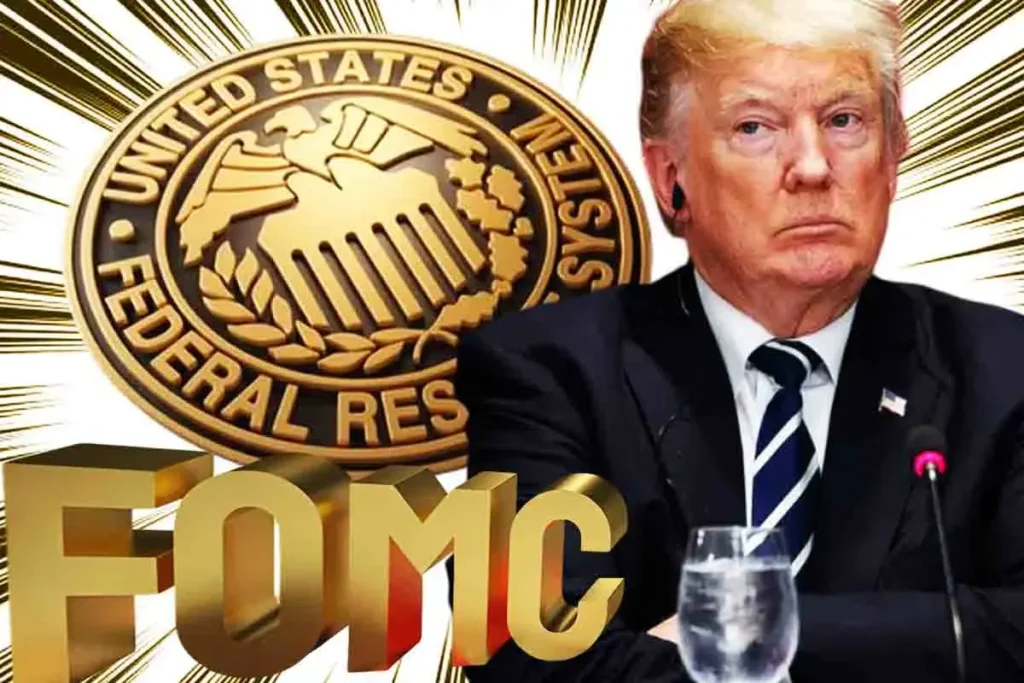Federal Reserve’s Cautious Approach Amid Tariff Concerns
The recent release of the Federal Open Market Committee (FOMC) minutes indicates that the Federal Reserve is adopting a cautious stance as global trade tensions escalate. The discussion surrounding President Trump’s tariffs has led to heightened inflationary concerns, compelling the Fed to carefully consider its next steps regarding interest rate adjustments. This article delves into the implications of these recent FOMC minutes, focusing on the Fed’s policy decisions, inflation metrics, and the broader economic landscape.
Insights from the FOMC Minutes
The latest FOMC minutes shed light on the Federal Reserve’s decision to maintain steady interest rates, emphasizing the importance of monitoring national economic indicators and macroeconomic developments. The minutes reveal a consensus among participants that inflation metrics have fallen below expectations in recent months. However, the looming threat of Trump’s tariffs, which are likely to exert upward pressure on prices, has prompted a more guarded approach to potential interest rate cuts. The participants expressed uncertainty regarding the timeline for tariff-induced inflation, highlighting the mixed feelings about the impact of trade deals on mitigating these inflationary pressures.
Tariffs as a Double-Edged Sword
Tariffs imposed by the Trump administration on various countries, including Iraq, Algeria, and Sri Lanka, have generated significant debate regarding their role in the U.S. economy. While these tariffs have sparked inflationary concerns, some participants believe that the signing of trade deals could offset some of the negative effects associated with these tariffs. This contradictory sentiment underscores the complex interplay between trade policies and inflation, influencing the Fed’s cautious approach in its forthcoming decisions.
Trump’s Defense of Tariffs
In response to criticisms about the inflationary impact of his tariffs, President Trump has defended his position vehemently. He referenced a study from the Council of Economic Advisers (CEA) which purportedly concludes that tariffs have not adversely affected inflation levels. Despite these assertions, the strong U.S. job data has shifted the narrative regarding potential rate cuts. Currently, the odds of the Fed keeping interest rates between 425 and 450 basis points stand at an impressive 93.3%, causing previously high hopes for more aggressive cuts to plummet to 6.7%. This drastic shift signifies growing skepticism around the feasibility of rate cuts in response to inflationary trends.
Dwindling Hopes for Rate Cuts
The market response to the recent economic data and FOMC minutes has revealed an overwhelming consensus that interest rates are unlikely to be slashed significantly in the near future. The feedback loop of strong employment numbers and persistent inflation concerns creates a challenging environment for the Fed’s policymakers. As hopes for a rate cut evaporate, President Trump’s calls for a substantial 300-basis-point reduction reflect a growing disconnect between the administration’s stance and market expectations. This disparity underscores the ongoing tension between fiscal policy and central bank independence.
Implications for the U.S. Economy
The cautious approach adopted by the Federal Reserve carries significant implications for the U.S. economy. As inflationary pressures mount and global trade tensions remain unresolved, the Fed is tasked with navigating a complex landscape that requires careful deliberation. The interplay between tariffs, inflation, and employment data presents a unique challenge, necessitating a balanced approach to interest rate policy. The decisions made in the upcoming FOMC meetings will not only impact domestic economic conditions but will also reverberate across international markets.
Conclusion: A Balancing Act Ahead
In summary, the FOMC minutes serve as a crucial indicator of the Federal Reserve’s cautious stance amid growing trade tensions and inflationary concerns. As participants weigh the implications of Trump’s tariffs and the potential effects on prices, a delicate balancing act is required. The mixed signals from economic data have resulted in dwindling hopes for significant rate cuts, underscoring the complexities involved in monetary policy. The path forward will demand strategic decision-making from the Fed, as it strives to sustain economic growth while mitigating inflationary risks. This environment calls for keen observation and analysis from economists, investors, and the general public alike, as the Federal Reserve grapples with challenges that could shape the economic landscape for years to come.


